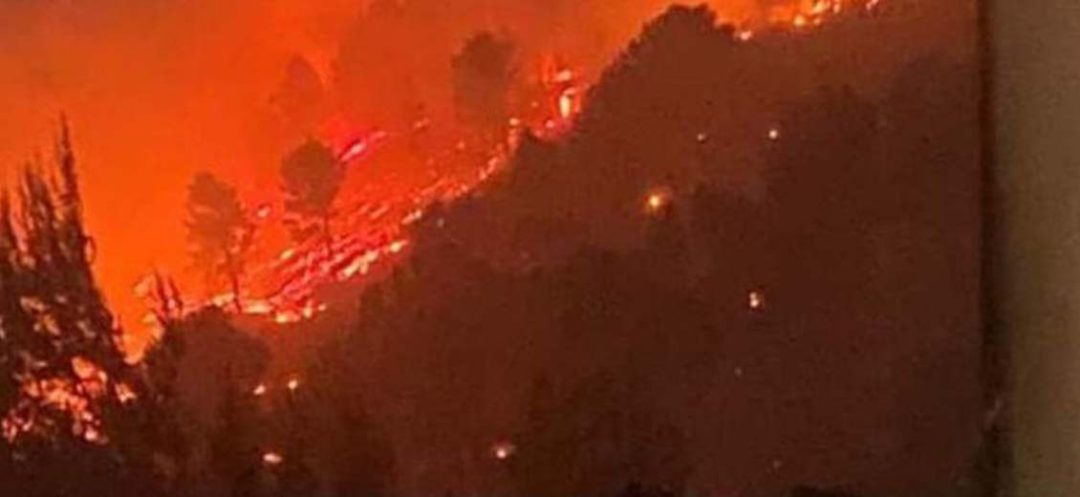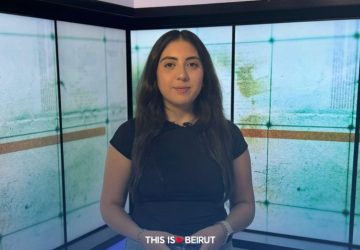Tension mounted on Tuesday on the southern border, while Hezbollah and the Israeli army intensified their exchange of fire.
The escalation, which has been ongoing since Sunday and has prompted some Israeli officials, to increase their threats against a country dragged into this war by Hezbollah, will be discussed at night by the Israeli war cabinet, at the request of Minister Benny Gantz.
During a tour of northern Israel, where fires caused by Hezbollah bombing raged, National Security Minister Itamar Ben-Gvir called for the “burning and destruction of all Hezbollah strongholds”.
Meanwhile, the Israeli army continued to target Hezbollah officials. Early this afternoon, a drone attack targeted a motorcyclist on the Naqoura road in the Tyre caza. The motorcyclist was reportedly killed, but no immediate details of the victim(s) were given. Hezbollah only issued a statement saying that “in response to the assassination, its fighters carried out an aerial drone attack against the Haramoun 810 brigade, stationed at the Golani barracks in the Golan Heights.” It did not specify who had been “assassinated”, but according to sources in the region, the attack was a riposte to Monday’s Israeli air strikes.
Israeli media also reported that a drone launched from Lebanon was shot down over Safed in the Upper Galilee in the north of the country.
On Monday evening, Israel fired a number of incendiary shells on forests near the Blue Line, causing the forest crops, olive trees, pine trees and cedars to ignite, mainly on the outskirts of the al-Batishiyeh area, located between the towns of Alma al-Shaab and Dhayra.
The fire spread to some houses in Alma al-Shaab, where the municipality and civil defense immediately rushed to extinguish the flames.
Of note, the civil defense teams worked hard to fight the blaze, despite the Israeli army firing a number of heavy direct shells at the outskirts of the town of Naqoura and Jabal al-Lubnani. The Israeli army resorted to spraying diesel to ignite the fires in the forests adjacent to the Blue Line in the western sector, according to local news agency al-Markaziya.
From the Israeli side, the fires in Kiryat Shmona, caused Monday by Hezbollah’s bombs, have raised concerns about the escalation of confrontations between both parties. The Israeli firefighting teams requested support from additional brigades to control the massive fires.
On Tuesday morning, Safed Hospital reported receiving 16 casualties from the fires, including seven soldiers.
Israeli Minister of National Security Itamar Ben Gvir emphasized that “if responsibility for the fighter jets and missiles were assigned to him, Hezbollah would know what Israel’s real response would look like.”
Meanwhile, Ben Gvir stated that “the fires in northern Israel are evidence of bankruptcy and a continuation of the containment policy,” adding, “It’s time for Lebanon to burn.”
During the night, the Israeli army kept launching flare bombs above the border villages adjacent to the Blue Line.
Reconnaissance flights flew over the villages of the districts of Tyre and Bint Jbeil. Moreover, the Israeli army fired its heavy machine guns towards the outskirts of Aita al-Shaab and Dhayra. At around 1:30 AM, the outskirts of the towns of Aita al-Shaab and Ramya in the central sector were subjected to intermittent Israeli artillery shelling, causing extensive damage to property.
Additionally, shortly after midnight, the outskirts of the town of Deir Mimas, the area of al-Qusaybah and al-Harf above the Litani River were exposed to a barrage of Israeli fragmentation shells. Their aim was to ignite fires to complete the series of fires set ablaze by the Israelis yesterday, but divine providence prevented that, the National News Agency reported.





